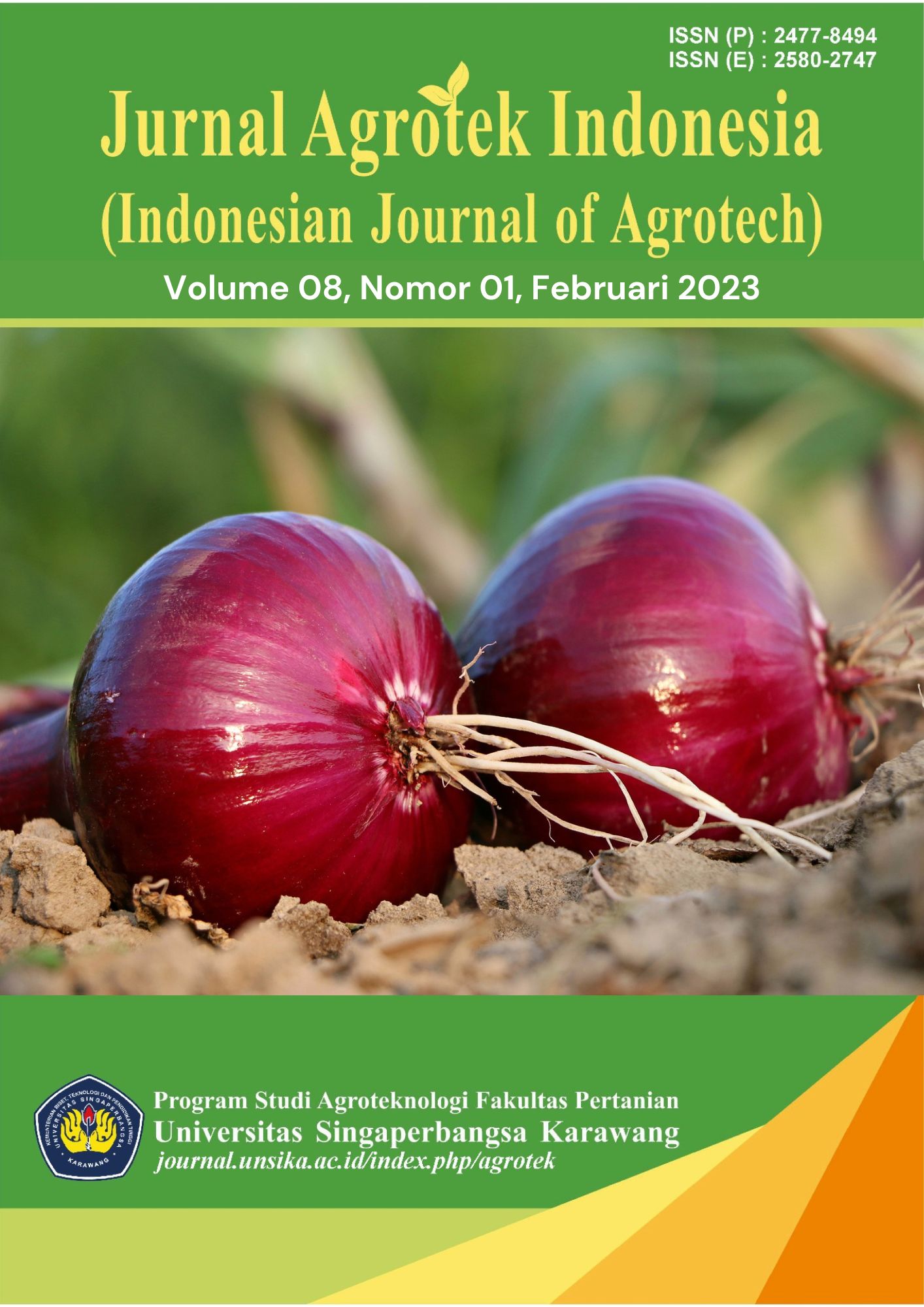Respon Tanaman Kedelai (Glycine max L. Merril) Varietas Anjasmoro Terhadap Pemberian Pembenah Tanah dan Pupuk NPK pada Lahan Kering Masam
DOI:
https://doi.org/10.33661/jai.v8i1.9030Abstrak
Lahan kering masam berpeluang untuk di kembangkan, baik melalui program intensifikasi maupun ekstensifikasi. Peluang intensifikasi masih sangat terbuka, karena rata–rata tingkat produksi yang di capai belum optimal. Kedelai (Glycine max L.) adalah salah satu komoditas utama kacang-kacangan yang menjadi andalan nasional karena merupakan sumber protein nabati paling populer bagi masyarakat Indonesia. Kacang ini juga termasuk daftar diversifikasi pangan untuk mendukung ketahanan pangan nasional. Langkah praktis untuk meningkatkan produktivitas kedelai yaitu melalui penggunaan pupuk secara efisien, baik pupuk organik maupun pupuk anorganik. Percobaan ini dilaksanakan pada bulan Juli sampai dengan Oktober 2018 di Kebun YAPETRI (Yayasan Pensiunan Peruri), yang terletak di Dusun Sapta Marga RT.07 RW.03, Desa Sinarbaya Kecamatan Telukjambe Timur, Kabupaten Karawang. Metode penelitian yang digunakan adalah eksperimen dengan Rancangan Acak Kelompok (RAK) faktorial. Faktor pertama adalah jenis pembenah tanah yang terdiri dari 3 taraf, yaitu pupuk organik jerami, pupuk organik sampah dan bottom ash. Faktor kedua dosis pupuk phonska terdiri dari 4 taraf (100% NPK, 75% NPK, 50% NPK dan 25% NPK), sehingga menghasilkan 12 kombinasi perlakuan unit percobaan yang akan diulang sebanyak 3 kali. Berdasarkan hasil penelitian maka tidak terdapat interaksi pengaruh perlakuan pembenah tanah dan pengaruh pupuk majemuk anorganik terhadap pertumbuhan dan hasil tanaman kedelai varietas Anjasmoro (Glycine max L. Merril) pada lahan kering.
Kata kunci: Anjasmono, bahan amelioran, kedelai, NPK, pupuk
Unduhan

Unduhan
Diterbitkan
Cara Mengutip
Terbitan
Bagian
Lisensi
Hak Cipta (c) 2023 Rika Yayu Agustini

Artikel ini berlisensiCreative Commons Attribution-ShareAlike 4.0 International License.

 Indonesian Journal of Agrotech
Indonesian Journal of Agrotech